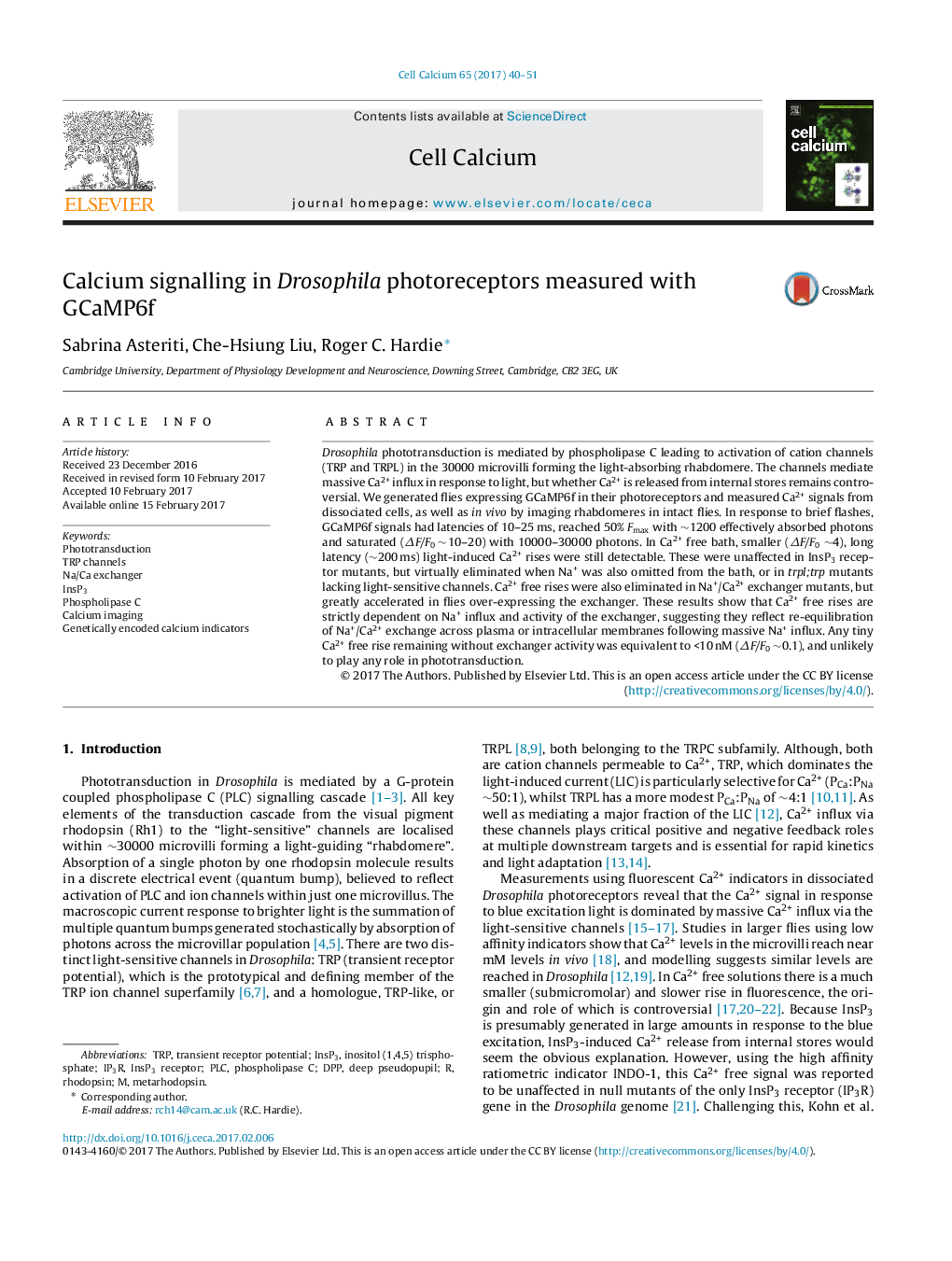| Article ID | Journal | Published Year | Pages | File Type |
|---|---|---|---|---|
| 5530479 | Cell Calcium | 2017 | 12 Pages |
â¢Fruitflies generated expressing GCaMP6f in photoreceptors using the opsin promoter.â¢Quantitative in vivo Ca2+ imaging in completely intact flies as well as dissociated cells.â¢Ca2+ rise in Ca2+ free bath abolished in Na+/Ca2+ exchanger mutants.â¢Ca2+ free rise due to re-equilibration of Na+/Ca2+ exchange following Na+ influx.â¢No significant light-induced release of Ca2+ from internal stores.
Drosophila phototransduction is mediated by phospholipase C leading to activation of cation channels (TRP and TRPL) in the 30000 microvilli forming the light-absorbing rhabdomere. The channels mediate massive Ca2+ influx in response to light, but whether Ca2+ is released from internal stores remains controversial. We generated flies expressing GCaMP6f in their photoreceptors and measured Ca2+ signals from dissociated cells, as well as in vivo by imaging rhabdomeres in intact flies. In response to brief flashes, GCaMP6f signals had latencies of 10-25 ms, reached 50% Fmax with â¼1200 effectively absorbed photons and saturated (ÎF/F0 â¼Â 10-20) with 10000-30000 photons. In Ca2+ free bath, smaller (ÎF/F0 â¼4), long latency (â¼200 ms) light-induced Ca2+ rises were still detectable. These were unaffected in InsP3 receptor mutants, but virtually eliminated when Na+ was also omitted from the bath, or in trpl;trp mutants lacking light-sensitive channels. Ca2+ free rises were also eliminated in Na+/Ca2+ exchanger mutants, but greatly accelerated in flies over-expressing the exchanger. These results show that Ca2+ free rises are strictly dependent on Na+ influx and activity of the exchanger, suggesting they reflect re-equilibration of Na+/Ca2+ exchange across plasma or intracellular membranes following massive Na+ influx. Any tiny Ca2+ free rise remaining without exchanger activity was equivalent to <10 nM (ÎF/F0 â¼0.1), and unlikely to play any role in phototransduction.
Graphical abstractDownload high-res image (152KB)Download full-size image
